How did the Nazi party’s messaging become so widespread in a time before Meta and TikTok and endless doomscrolling?
Well, largely,through the mail.
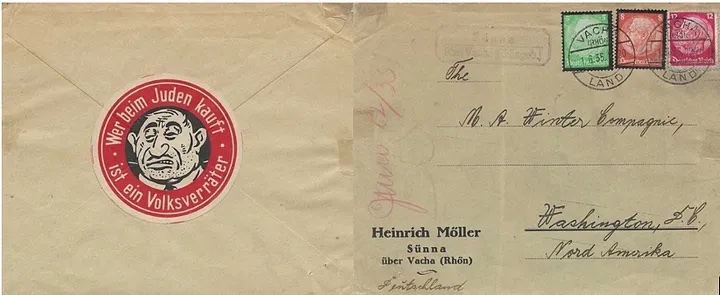
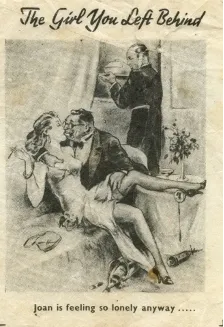
As a collector, I am particularly interested in items, like these labels, that fall in the middle of the Venn diagram of my interest in Holocaust-related artifacts and my interest in philately (stamp collecting). Government-issued postage stamps and cancellation marks — as well as the unofficial labels (called “Cinderellas” in the philatelic world) that different organizations, companies, and individuals created to affix to letters — provide an incredible window into the political and social zeitgeist of any given moment in time.
Today we have social media to disseminate information (real or falsified), ideas, opinions, and propaganda. In the early to mid-1900s, “social media” consisted of radio and mail. So a letter from that period really contains two sources of information: there is the letter itself, but there’s also the outside of the envelope. The stamps and other accoutrements — some government-issued and many sponsored by companies or groups that wanted to promote a message or recruit customers and members with similar beliefs — tell a powerful story about what’s happening in a given region at a given time.
Because of my particular interest in philately, the Philipson collection contains a staggering amount of mail, and you’ll see quite a bit of it in our stories.Here’s one trend you might pick up on: leading up to and during the Holocaust, the German government was meticulous about keeping anti-Jewish propaganda off of official postage stamps. (One of many ways you’ll see they attempted to manipulate public perception to hide the atrocities they were perpetrating.)But you’ll see plenty of it in the cancellations and other labels, of course.
German Mail Propaganda
One way theGermans furthered their anti-Jewish narratives was by producing a series ofCinderellas, as well as rubber stamps and other decorations, that were glued to letters, documents, mail, etc. as a way to spread their message of hate and blame the Jewish people for anything and everything they could. As the mail and other documents travelled around Germany and the world, passed from hand to hand along the way, the propaganda affixed to them made their way into the broader social conscious. It “went viral,” you might say. The mail-oriented propaganda pictured here are just a small sampling of my collection — which itself covers only a small fraction of the hate that was spread through the mail during the time period.



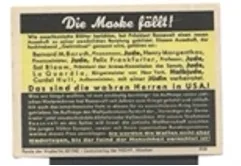
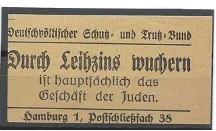
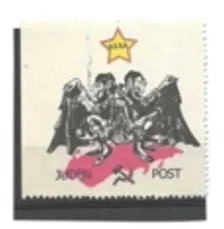
Other Social Media Platforms
Along with mail, the Nazis had two other platforms from which to spread their hateful messages across Germany and beyond in the 1930s and 1940s. Periodicals like newspapers and magazines were one of them, and they deserve their own article — stay tuned for that. But the other was the radio, which Hitler used constantly to broadcast his messages of vitriolic hate.
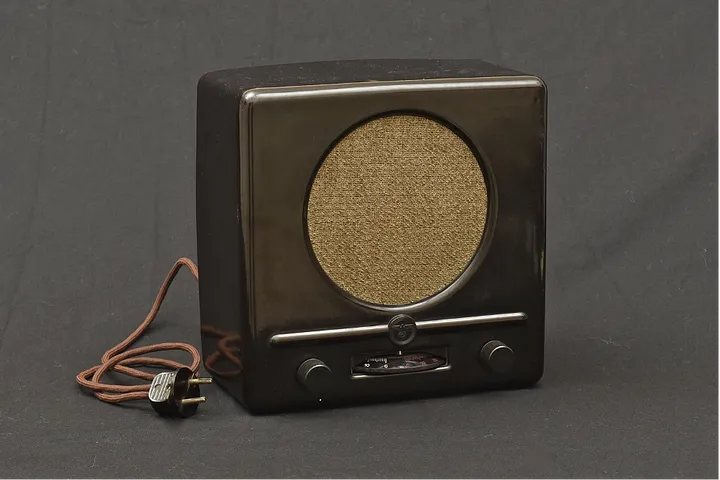
Postage, flyer drops, and radio broadcasts may have been slower to spread than virtual likes and shares, but they were just as effective at spreading hateful political views. And as we look back on the way the Nazis used extremist messaging, obfuscation of truth, and sheer volume to build support for their atrocities, it’s easy to see how social media might present similar threats today if we aren’t vigilant about questioning what we see in our newsfeeds.
